The quick guide to making music on Linux
We take a look at some of the best free and open-source software
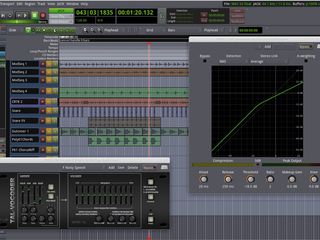
Embrace the penguin
What comes to mind when you hear the word “Linux”? Does your brow furrow at the thought of entering command lines in a terminal? Do your knuckles whiten in imagined frustration over trying to get your favourite MIDI interface to work in an alien environment? Does that old adage about Linux being free only if your time costs nothing echo in the back of your mind?
Relax. Linux no longer deserves the reputation that precedes it. Many of today’s Linux-based operating systems (called “distros”) are as warm and cuddly as… well, anything but a penguin! In fact, operating systems like Ubuntu Studio and KXStudio are built and maintained with artists and musicians in mind, coming with everything you need to produce professional quality recordings right out of the box. And guess what? Most of it is free!
No charge
That’s right. Though there are a few payware tools for Linux (and more coming, thanks to developers like Bitwig and u-he), the vast majority of Linux software is free and open source, meaning anyone can download, use and distribute it as they like. Moreover, the source code is almost always freely available for anyone to adapt, alter and improve. So, if you don’t like the way your Linux sequencer handles MIDI clock, you can change it as you see it.
While Linux does support plugins (in a number of formats - DSSI, LADSPA, LVX), most Linux music applications can freely interconnect via the JACK server. JACK acts as a central routing station between your DAW, instruments, mixers, effects and the outside world. It can be a bit intimidating at first, but once you’ve tasted this sort of freedom, it’s hard to settle for the locked-in DAWs we’re used to on other platforms.
Many Linux distros can reside on the same drive as your other operating systems. Better still, some are portable, loading from a USB drive or DVD. This allows you to get a taste of the OS without committing it to your system drive.
Over the next six slides, we're going to show you some of the best music making software that Linux has to offer.
For more on making music with freeware, check out the March 2015 issue of Computer Music (CM214).
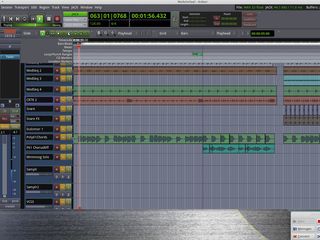
Ardour
The king of audio on Linux, Ardour is a mature DAW, maintained and updated regularly. MIDI and audio tracks are supported, as are plugins, and it’s compatible with JACK.
If you want to download the latest binary, direct from the Ardour site, you’ll be asked to donate. However, it’s also included in music distros, and the source code is freely available.

Plugins
Like many DAWs. Ardour puts the main project window front and centre with a mixer-style track channel to the left, where various plugins can be instantiated.
In our project, we’ve opened the Calf Compressor from Thor Harald Johansen and a vocoder from Togu Audio Line. Indeed, there are a number of TAL freebies ported to Linux.
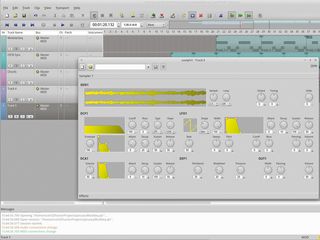
Qtractor
Let’s take a look at another popular Linux DAW: Rui Nuno Capela Qtractor. It provides support for both audio and MIDI tracks, and you can open plugin effects and instruments in it - like samplv1, an old-school sampler from the same developer.
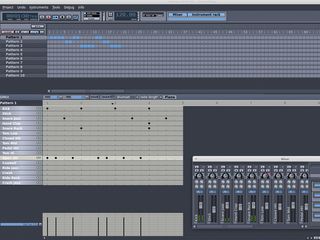
Hydrogen
If you’re looking for an easy way to whip up some beats, you’d do well to check out Hydrogen.
This classic Linux application is JACK-compatible, so it’ll easily sync up and run alongside your favourite Linux sequencer or DAW. You can bring in your own samples to build kits and edit patterns together into songs.

ZynAddSubFX
It may not be pretty, but you’d be hard pressed to find a synthesizer with more power than ZynAddSubFX.
A sound design playground, it combines advanced virtual analogue subtractive and additive synthesis with a dedicated pad synth and effects. There are loads of modulation options and enough parameters to keep you busy for years.
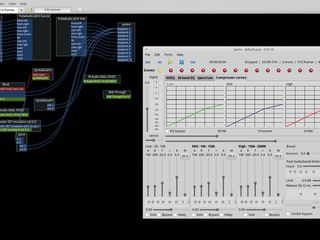
Jamin
When you’ve made a song you like, you can master it using Jamin, a comprehensive suite of mastering tools in a dedicated application. Multiple EQ option, spectrum analysis and multiband dynamics are provided.
Here, you can also see Patchage in the background, an alternative to JACK’s routing interface.

Computer Music magazine is the world’s best selling publication dedicated solely to making great music with your Mac or PC computer. Each issue it brings its lucky readers the best in cutting-edge tutorials, need-to-know, expert software reviews and even all the tools you actually need to make great music today, courtesy of our legendary CM Plugin Suite.












